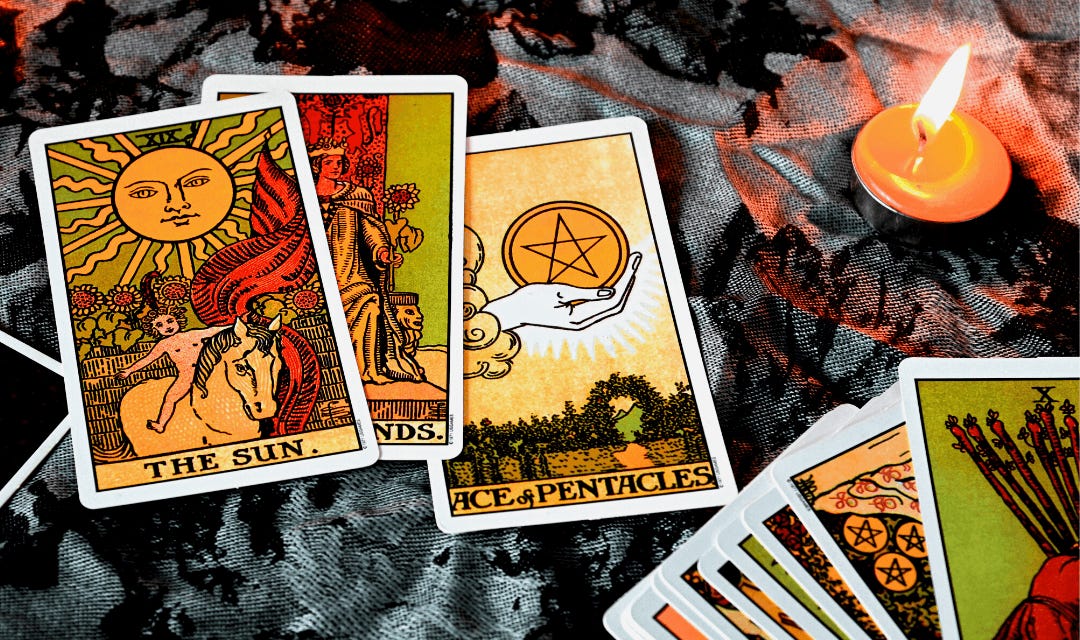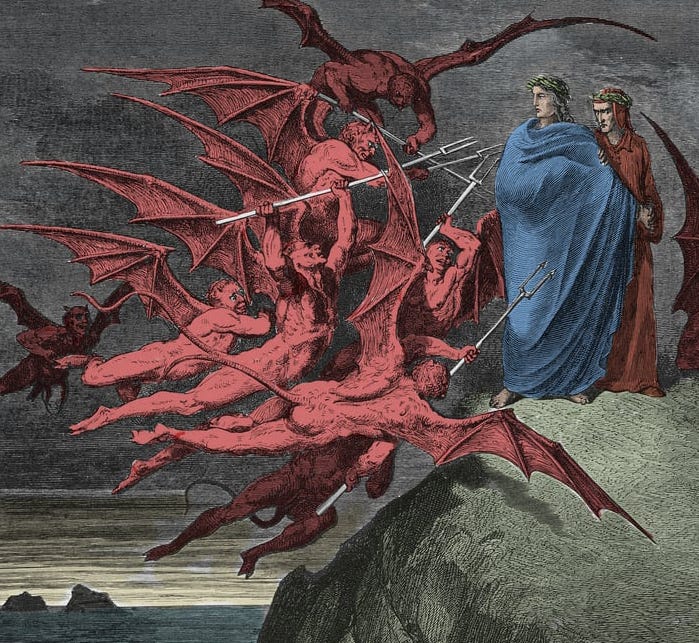In The Origin of Consciousness in the Breakdown of the Bicameral Mind, Julian Jaynes proposed that after the collapse of the bicameral mind, wherein pre-conscious humans experienced "divine voices" as auditory hallucinations from their right hemisphere, the loss of these divine guiding voices led to societal upheaval and necessitated new methods for reestablishing contact with the gods.
One of the first and most enduring of these methods is divination.
From Tarot to the I Ching, to observing bird flight patterns and tea leaves, humans have used a variety of different methods for reconnecting with the divine, “listening” to the will of God.
The right hemisphere is omniscient and sees reality as a whole, beyond the left brain’s fragmented logic. It moves beneath awareness with subconscious subtle movements, guiding the hand in a tarot shuffle, a pendulum’s sway, or the throw of I Ching sticks. Through subtle motion, it whispers truths the conscious mind cannot grasp.
From the perspective of quantum physics, reality unfolds as a wave of possibilities, unformed until observed. The right brain, untethered from time, touches this quantum sea, selecting the path most in tune with the moment. Synchronicity bridges the unseen and the known, where meaning emerges not from cause, but from deep connection, like ripples meeting across a vast ocean.
Divination is a return to the lost Eden, where the mind once spoke in symbols, not words. In the quiet between thought, the Self awakens, guiding the seeker back to the wisdom that was never truly lost, only forgotten. Since the right brain consciousness is not bound in the space-time dimension, divination can inspire a strange kind of knowing, or remembering, of that which is going to happen, and in fullness of time, has already happened.
The I Ching
The I Ching is arguably the most sophisticated of all divinatory systems. With sixty-four hexagrams that can contain between zero and six changing lines, transforming into any of the other possible hexagrams, the number possible readings is staggering.
Imagine a tarot deck with four thousand and ninety-six cards and you’ll get some idea of what it’s like to work with the I Ching. Each Hexagram is in itself an image, composed of two trigrams, one on top of the other. The eight trigrams represent the eight elemental forces, Heaven, Earth, Thunder, Mountain, Wind, Water, Fire and Lake. Each hexagram comes with an extensive body of commentary, and each of the six changing lines in each hexagram is accompanied by a line of verse with its own commentary from Taoist, Buddhist, and Confucian scholars.
These commentaries are useful to learn the symbolic meaning of the various hexagrams and changing lines, but through extensive use of the I Ching one learns to move beyond these commentaries, rapidly stimulating the development of intuition in a way few other methods can.
One way of thinking of the I Ching is as the Chinese Bible, but a Bible that you can ask questions and receive answers from. Another way of thinking of it is as a guide for awakening. If the I Ching is read straight through, like a regular book, it reveals in symbolic form, a road map to the process that Jung called individuation.
If used for divination, the I Ching is a mirror for the soul, a conversation with the unseen depths of the psyche. The hexagrams are messages from the divine reflecting your situation and guiding you to the next step in the process of integration.
Carl Jung, who wrote the forward to the first western translation of the I Ching, saw it not as fortune-telling, but as a way to reveal the hidden currents of the unconscious, where fragmented parts of the self—the wounded, the forgotten, the repressed—rise into awareness. Each hexagram is a moment in time, a snapshot of the psyche’s unfolding, where synchronicity aligns outer chance with inner necessity.
Complexes, those tangled knots of emotion and memory, dissolve not through force, but through understanding. The I Ching offers a path, a way to witness these psychic fragments, letting them find their place within the greater whole.
We often thing of ourselves as individuals, but a careful examination of the mind reveals that the ego is not the only force in the psyche. There are a variety of autonomous forces, known in traditional cultures as demons, that can usurp the ego and control the individual, driving every imaginable compulsive behavior: anger, anxiety, greed, substance abuse, and many more are all usurpations of the ego’s power. If you’ve ever raged out on a random stranger or a spouse, that was an autonomous force, or demon, possessing you.
Ego gets a bad rap in our culture, but it is the weak ego, the one that does not execute its function properly and is thus overpowered, and the arrogant ego, the one that does not subordinate itself to its superior, that are problematic.
A properly functioning ego is essential to the Work.
One of the primary aspects of the I Ching is strengthening the ego, whose rightful role is like a general disciplining his army, which is the meaning of Hexagram 7, The Army. A good general will have total control of his forces, never allowing them to mutiny and usurp his control, while simultaneously recognizing and subordinating himself to the ruler, the Self.
As the complexes integrate and the opposites unite, the Self emerges—not as something created, but as something remembered. In the casting of the yarrow stalks or the casting of coins, in the lines that shift and change, the journey toward wholeness unfolds.
If you’d like to work with the I Ching, I strongly recommend James DeKorne’s Gnostic Book of Changes. DeKorne provides pithy commentary on each hexagram and line, adding quotes from many different spiritual and psychological traditions from around the world.








